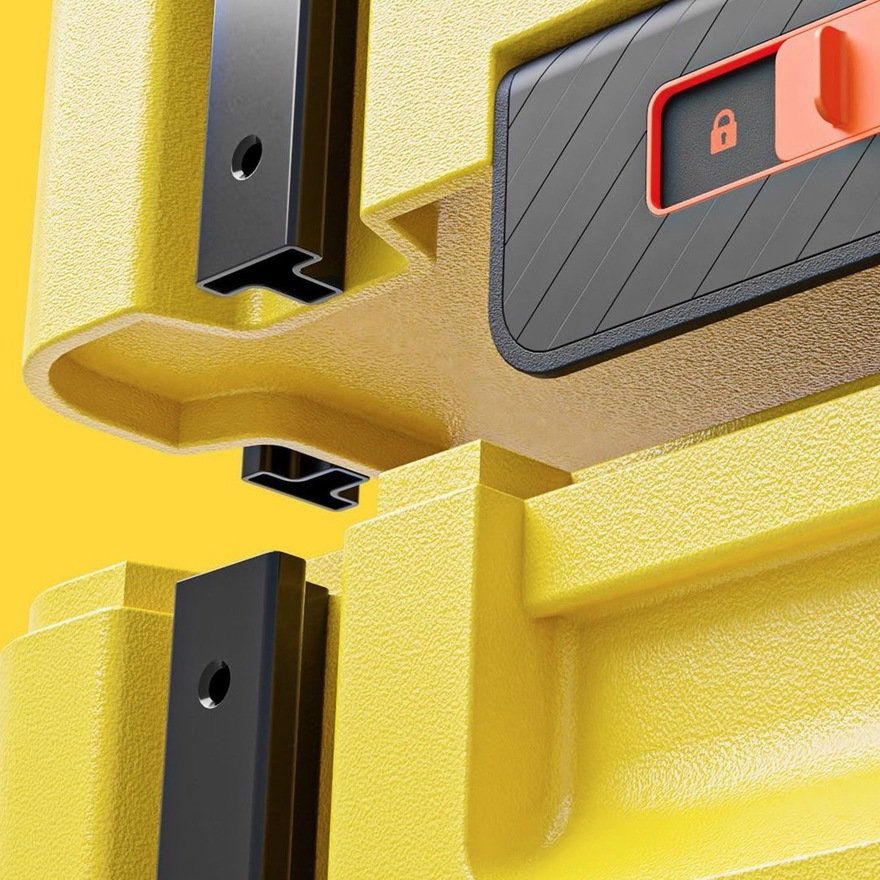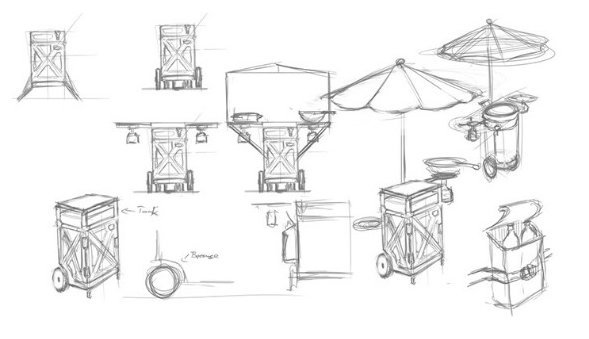Our Core77 Design Awards are always led by experts in their field with fascinating stories as to how they got there—that's why we love getting to know them better in interviews we share with our Core77 audience. In 2021, we're proud to have a number of judges out there actively changing the industry as we know it, including this year's Furniture & Lighting Jury Captain, Tariq Dixon.
 Tariq Dixon, co-founder of TRNK NYC (Credit: Ellliott Jerome Brown Jr.)
Tariq Dixon, co-founder of TRNK NYC (Credit: Ellliott Jerome Brown Jr.)
Tariq Dixon is the co-founder of TRNK NYC, a curated online furniture brand that includes over 50 designers as well as a in-house collection designed by Dixon. Beginning his career in finance at Lehman Brothers in 2008, the same year the investment firm collapsed, Dixon quickly became disillusioned by the idea of an involvement in Wall Street. He later moved into fashion as a men's buyer at both Gilt Groupe and Armani. During this time, his personal passion for furniture design got him started on a curation project with his business partner. As Dixon recalls of the early days of TRNK, " we would travel across the states, go vintage shopping and to flea markets, and then we acquired a surplus of product. We needed to get rid of stuff, so we ended up reselling it on vintage marketplaces, and that eventually evolved into what we're doing today." What initially began as an exploratory exercise born out of a love of design helped blossom the idea for focusing on home furnishings full time.
Much of Dixon's recent work within TRNK reflects his belief that designers have a responsibility to explore how prejudice can be upheld through design conventions, even (or perhaps particularly) the aesthetic ones. He's helped organize two recent art and design exhibitions exploring themes of race and identity, and a desire to move beyond the simplistic concepts of diversity and inclusion to something far more evocative and three-dimensional. The photography show Mien opened in June 2020 and was organized to benefit the Ali Forney Center, a community center focused on helping LGBT youth experiencing homelessness—as described in the exhibition statement, Mien featured "a cross-section of queer artists of color who leverage portraiture photography to explore identity beyond visibility." TRNK's latest virtual exhibition to open toward the end of 2020 was Provenanced, which sought to explore colonial aspects of traditional design history and modernism.
We recently spoke with Dixon about design histories largely untold, and how TRNK hopes to serve an example of how pipelines can be made to welcome even more up and coming black and brown designers into the furniture design industry.
How did your start with TRNK collecting vintage furniture evolve into designing your own collections?
Our first e-commerce experience was and still is partly this multi-brand curatorial platform, so we work with about 50 different brands from around the globe. And we select our favorite products and their collections to highlight on the website, but we were identifying some voids in the market. Initially we saw that in upholstered seating; we were looking for a particular look within a particular price point and couldn't find it, so decided we wanted to design and develop it ourselves.
And that's often how the TRNK collection evolves is through problem solving. For example, our second collection for TRNK, which was the Arc and Angle series, was really trying to solve for needing a versatile, friendly seating solution for a small space. With our more modular series, we felt like a lot of the modular seating units on the market were oversized. So again, we scaled it down to something a little more petite and refining some of the details. So for a TRNK collection product, that often is sort of the nexus of the design process—trying to solve a particular problem for our customers or feeling there's a void in the market we can identify.
 Sofa by TRNK NYC
Sofa by TRNK NYC
How has the past year affected how you look at your business and your design process?
This year has certainly been unusual and it just forced us to embrace technology in new ways we previously wouldn't have considered. Even having to manage a lot of the design and product development process virtually was something very new for us; we had to embrace renderings in ways we hadn't before. We previously didn't use renderings for lifestyle imagery, but had to because of the pandemic. So all of that has its pluses and minuses, but one thing we did realize is we can bring products to market quicker or at least test and validate concepts with our audience quicker using technology. So that definitely allows us to expand the scope of what we're able to do and minimize the liability associated with taking risks. The attitude of the consumer is changing too. There's more of a willingness to purchase big ticket items online, And so, the role of digital's is obviously ever- growing and becoming more important.
Despite the challenges, it's exciting we're able to take on more risks and try out concepts more quickly. It's also allowed us to expand our talent pool, and how we work with designers. There's not so much a requirement for the designer to be local. For example, I'm actually working very actively with a designer in Chicago on some new TRNK collection products and I previously wouldn't have even considered that because I typically want the person side by side working with me. But I've learned a new way of collaborating that expands who we can work with.
Between TRNK and exhibitions you curated like "Mien," your work in my eyes really expands the definition of not only what a designer can do but also the impact they can make. How would you define what it is you're trying to do with TRNK and the overall impact you're trying to make?
For me, the impetus, the motivation for starting the business was really developing this newfound appreciation for design and how design was so formative in a lot of my fondest memories and experiences. Whether it's the interactions with friends and family at home or just waking up and developing morning rituals; I am very much an introvert too and spend a lot of time at home.
The role those design decisions play in forming those experiences are oftentimes so overlooked. A lot of these design decisions are sort of made for us. And we don't fully understand the impact of them, we can only implicitly appreciate them. So I saw an opportunity with TRNK to bring that role of design more to the fore, and those are some of the conversations we've tried to start. Like helping our customers become more mindful and aware of the implications of their design consumption choices.
So, you look at some of the exhibitions we've organized, like Provenanced, and that was motivated by the fact that I thought there was greater opportunity for the design world to interrogate not just the implications of diversity and inclusion within the workplace, but also performative qualities of works and how the same systems infiltrate the end product. So some of the lenses we were trying to apply to workplace culture, I thought, we can also apply to how we look at the actual work we're producing ourselves. One of the most glaring omissions I saw [in design history] was the contributions of African and indigenous makers, artists, to contemporary Western visual language—especially in the modernist movements. I saw this conversation I was having among my own peers and one that was very topical at the moment, and found new ways of inserting design into those conversations.
 A hand-carved stargazing chair, made by the Lobi people in the first half of the 20th century is featured in TRNK NYC's latest exhibition "Provenance"
A hand-carved stargazing chair, made by the Lobi people in the first half of the 20th century is featured in TRNK NYC's latest exhibition "Provenance"
I had some questions about Provenanced because, first of all, it's fascinating to dig into these non-European design histories that had such a huge impact on the modernist movement. Do you have any interesting historical examples of design contributions from black and indigenous societies that have been overlooked yet have had massive influence?
I think the most obvious one is the role African works played to 20th century modernists like Picasso. And the reality of the fact that these ideas only really gained validation to the Western world through the lens of Picasso and the likes of his peers. The works were literally discarded to pawn shops and antique shops and treated as worthless artifacts until this movement of 20th century artists in Europe granted it this new validation. And, you know, that's not an unusual process; it's very much the rule rather than the exception.
So it's about realizing how concepts still become validated with the same mechanisms, but also who's awarded provenance for those ideas. I don't think much has changed since the era of Picasso. That's an example most people can use once you actually take a step back and really analyze it. It seems glaringly obvious, but we're just so accustomed to how these systems operate that we just kind of implicitly accept it.
Yes, we're still very indoctrinated in that perspective. For example, we haven't questioned until very recently designers' blanket acceptance of Swiss style modernism and minimalism as being the only "right" form of design, and give all the credit to the Europeans behind those movements.
Even for us, Provenanced wasn't even remotely comprehensive. You can also analyze the same ways in which the Japanese have been hugely influential to minimalism and modernism, but not afforded the same recognition.
Another relatively new phenomenon is our willingness to even question history. We almost just accept something we've read in history books as truth, even though oftentimes there is very much a biased agenda in how history is written. And so we're now coming into a time where we're actually interrogating what we've been taught and realizing there are two sides to every story—or even multiple sides every story. So that's what exhibitions have to do as well is take a look back and really question some of the assumptions we made based on what we've been told.
Within our collective culture, we seem to be really inundated with examples of design that fit and reinforce this Euro-centric modernist design mold. I'm curious within your own journey in design how you've helped yourself break away from the collective consciousness a bit, inform yourself, and appreciate new design perspectives?
Especially in the age of social media, there's an impulse to gravitate toward what we see most repetitively. You see, in the design world, trends become so pervasive and then it's reinforced when you see it 10 times over every single day. So it's only natural to almost make the assumption what you're seeing is good or valuable based on the popular pandemic opinion around it.
You just have to be willing to to take a step back and critique and question, and look for the patterns within a lot of assumptions. And you know, a lot of these exercises of progress and change aren't really passive; it requires you to really actively critique and actively identify your own omissions.
Part of my individual process is really relying on intuition, considering which things I just emotionally respond to or gravitate toward. I often think about that in the spatial design process as well, just about not overthinking how something seemingly disparate will fit into my living space. Remembering I see value in this individual object or design and I want to look at it every day, so I'm going to make it a part of my everyday experience even if it feels disconnected at first. That's kind of how I navigate those decisions.
That's an excellent point, it speaks to the idea that we're all living by these silent style rules we've maybe absorbed through study or observation. By becoming aware of that, you're reminding yourself you can break those rules and create your own.
Exactly. A different example that sort of, conversely, you see popularized is African masks in decor. And you often see this even paired with the sort of luxury French midcentury works like Prouve is very much an aesthetic. But I think one of our obligations too is we want to make a better attempt to understand that work if we do emotionally respond to it and we love the way it looks in our space. Perhaps taking the time to better understand that individual work and contextualize it as opposed to just treating it as mere decoration.
 A view of the entirely virtual exhibition, "Provenanced"
A view of the entirely virtual exhibition, "Provenanced"
I think there's a little bit of an obligation, especially people within the design industry, to take that additional step. Because I do think not doing so has certain risks, too. And that's something we definitely learned, that was one of the takeaways from Provenanced is if these histories aren't maintained, they're just forever lost. That's one of the challenges right now with trying to re-contextualize some of those works from West Africa. Over the years, the lineage was lost, especially for works that were originally pillaged. But you can even see how this same attitude still applies in many ways now. So I think having these conversations, reminding each other of those impulses, and asking what taking that additional steps actually means are the first ways to re-engage.
In your opinion, where you think the furniture industry is going wrong in terms of access and the embrace of black and brown designers? I think it's safe to say furniture design is probably one of the more privileged areas of design to go into, and therefore is an area of design with a lot of gatekeeping still intact. How do you think we create those new pipelines to welcome more diverse perspectives into the industry?
I think the pipeline has to start much sooner. The reality is going to an art school or industrial design program is very much a privilege. So broadening access is essentially the long term stuff that's essential. In the interim, there are some ways businesses like mine can be beneficial by assisting in providing some of the resources to bring ideas to market. That's the thing, the barriers to entry are often capital, but then also having access to an audience through an institution with established clientele. And so there are ways in which we can expand that visibility and reach of diverse voices. And in some cases, yeah, that might require us to take some additional steps.
In our example, one initiative we're looking to undergo is we're starting to work with designers on not just carrying existing products, but also on the product development and production piece; so more like a licensing arrangement. It broadens the talent pool we can work with too because they can be someone who's younger, more emerging with fresh ideas, but doesn't necessarily know how to bring an idea full circle to the market. There are different, unique ways, especially in this day and age, to broaden the scope of talent we're working with.
You are leading the 2021 Core77 Design Award's Furniture & Lighting jury team this year. What will you be looking for in the entries you review, and what would excite you to see within the selection of projects?
For me, a narrative is always interesting. I love hearing more about the context and the sources of inspiration, how the works connect to past experiences or memories makes them all the more interesting. What also fascinates me is materiality. There are always new materials developing in this day and age, but there are also new approaches and tactics for manipulating old materials. So I'm always fascinated by seeing how new designers are reinterpreting or reinventing these materials.
Thinking of submitting to the Furniture & Lighting category in the 2021 Core77 Design Awards? Enter today—Final Deadline ends Thursday, April 1st.
from Core77 https://ift.tt/3dnFHYW
via IFTTT

























 Mushroom packaging by Ecovative
Mushroom packaging by Ecovative











